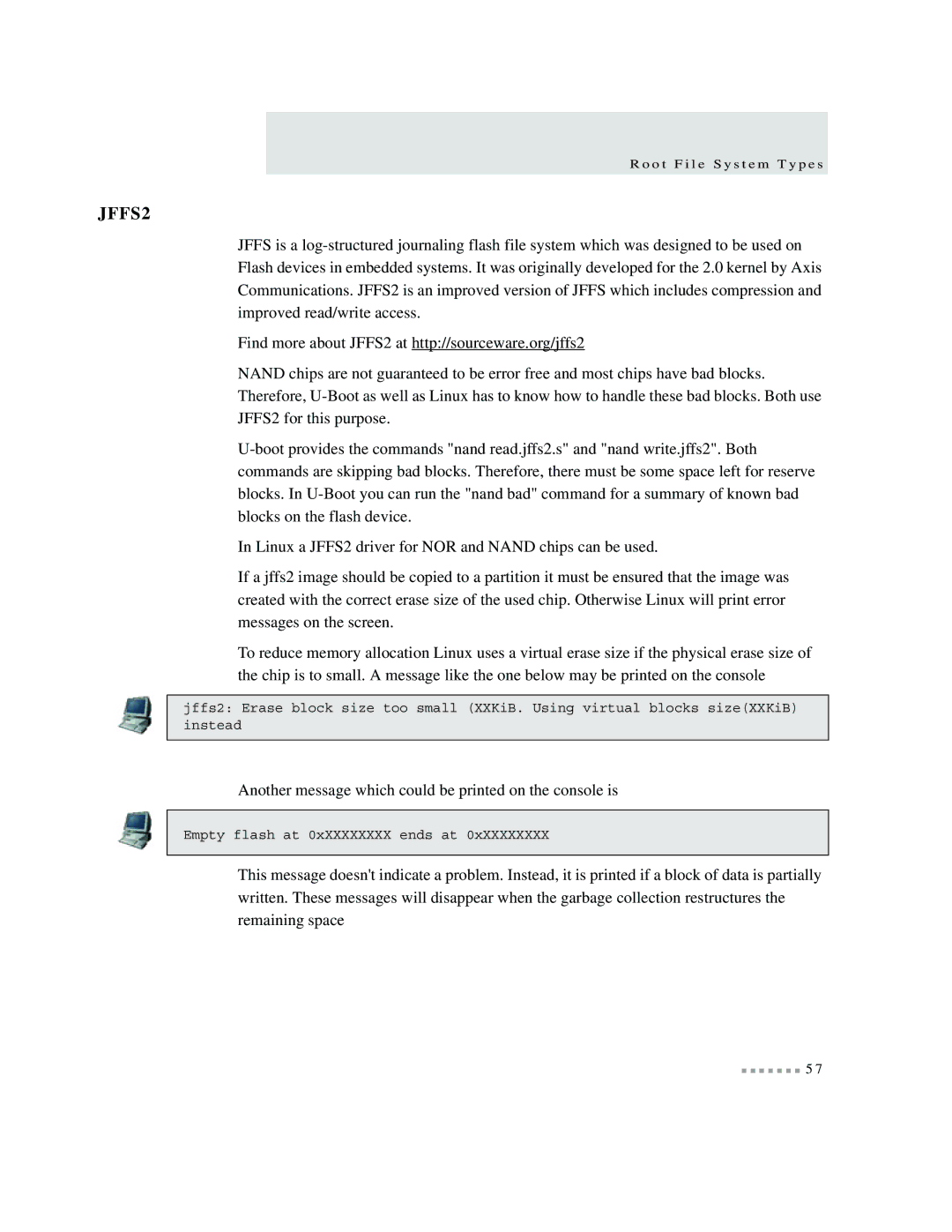
R o o t F i l e S y s t e m T y p e s
JFFS2
JFFS is a
Find more about JFFS2 at http://sourceware.org/jffs2
NAND chips are not guaranteed to be error free and most chips have bad blocks. Therefore,
In Linux a JFFS2 driver for NOR and NAND chips can be used.
If a jffs2 image should be copied to a partition it must be ensured that the image was created with the correct erase size of the used chip. Otherwise Linux will print error messages on the screen.
To reduce memory allocation Linux uses a virtual erase size if the physical erase size of the chip is to small. A message like the one below may be printed on the console
jffs2: Erase block size too small (XXKiB. Using virtual blocks size(XXKiB) instead
Another message which could be printed on the console is
Empty flash at 0xXXXXXXXX ends at 0xXXXXXXXX
This message doesn't indicate a problem. Instead, it is printed if a block of data is partially written. These messages will disappear when the garbage collection restructures the remaining space
5 7
